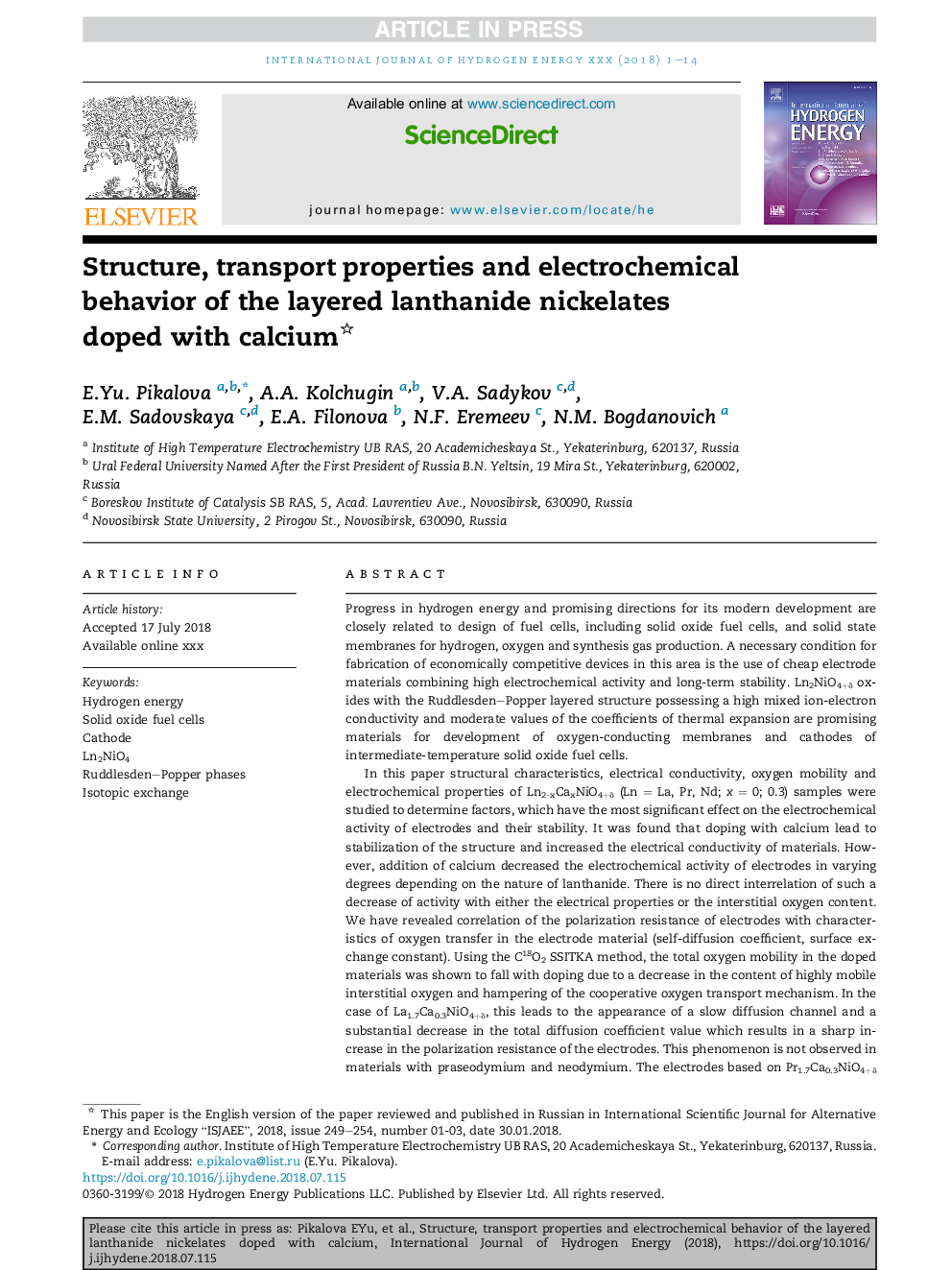| Article ID | Journal | Published Year | Pages | File Type |
|---|---|---|---|---|
| 8948278 | International Journal of Hydrogen Energy | 2018 | 14 Pages |
Abstract
In this paper structural characteristics, electrical conductivity, oxygen mobility and electrochemical properties of Ln2-xCaxNiO4+δ (Ln = La, Pr, Nd; x = 0; 0.3) samples were studied to determine factors, which have the most significant effect on the electrochemical activity of electrodes and their stability. It was found that doping with calcium lead to stabilization of the structure and increased the electrical conductivity of materials. However, addition of calcium decreased the electrochemical activity of electrodes in varying degrees depending on the nature of lanthanide. There is no direct interrelation of such a decrease of activity with either the electrical properties or the interstitial oxygen content. We have revealed correlation of the polarization resistance of electrodes with characteristics of oxygen transfer in the electrode material (self-diffusion coefficient, surface exchange constant). Using the C18O2 SSITKA method, the total oxygen mobility in the doped materials was shown to fall with doping due to a decrease in the content of highly mobile interstitial oxygen and hampering of the cooperative oxygen transport mechanism. In the case of La1.7Ca0.3NiO4+δ, this leads to the appearance of a slow diffusion channel and a substantial decrease in the total diffusion coefficient value which results in a sharp increase in the polarization resistance of the electrodes. This phenomenon is not observed in materials with praseodymium and neodymium. The electrodes based on Pr1.7Ca0.3NiO4+δ and Nd1.7Ca0.3NiO4+δ, developed in this work, have an acceptable level of the electrochemical activity along with a high electrical conductivity and increased stability in comparison with undoped compositions and can be recommended for use as cathodes for intermediate temperature fuel cells.
Related Topics
Physical Sciences and Engineering
Chemistry
Electrochemistry
Authors
E.Yu. Pikalova, A.A. Kolchugin, V.A. Sadykov, E.M. Sadovskaya, E.A. Filonova, N.F. Eremeev, N.M. Bogdanovich,
